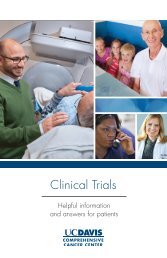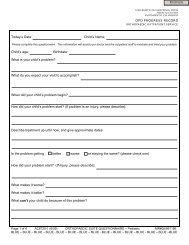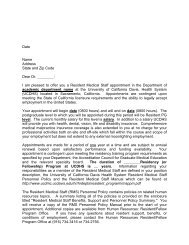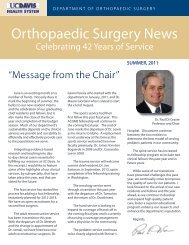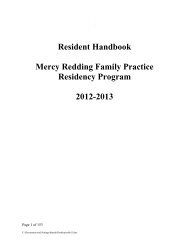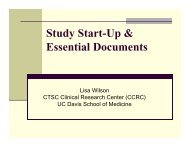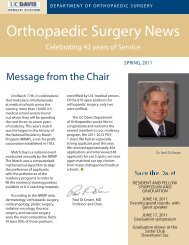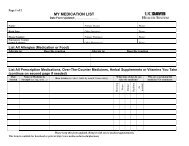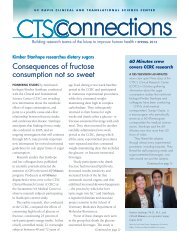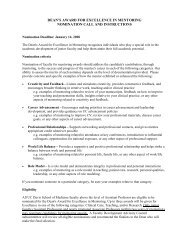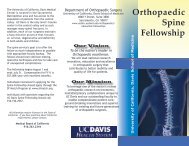Center for Professional Practice of Nursing CPR Guidelines for ...
Center for Professional Practice of Nursing CPR Guidelines for ...
Center for Professional Practice of Nursing CPR Guidelines for ...
You also want an ePaper? Increase the reach of your titles
YUMPU automatically turns print PDFs into web optimized ePapers that Google loves.
GUIDELINES FOR ADULTS<strong>Center</strong> <strong>for</strong> <strong>Pr<strong>of</strong>essional</strong> <strong>Practice</strong> <strong>of</strong> <strong>Nursing</strong><strong>CPR</strong> <strong>Guidelines</strong> <strong>for</strong> Health-Care ProvidersPROVIDE EFFECTIVE BREATHSOpen the victim’s airway. Use the appropriate technique to openthe airwayooHead Tilt-Chin Lift: tilt the head back and lift the chinJaw Thrust: If a head or neck injury is suspectedDeliver each rescue breath over 1 secondThe victim’s chest should rise with each breathAvoid excessive ventilationUse bag-valve mask or barrier device if availableOnce an advanced airway is placed, continuous compressions arepre<strong>for</strong>med without pause <strong>for</strong> ventilation. Ventilations aredelivered at a rate <strong>of</strong> 1 breath every 6-8 secondsIf there is a pulse and the victim is not breathing:Provide rescue breathing: 1 breath every 5-6 seconds(10-12 breaths/minute)CONTINUE HIGH QUALITY <strong>CPR</strong>Continue cycles <strong>of</strong> compressions and ventilation at a ratio <strong>of</strong> 30:2Healthcare Providers should rotate compressors every 2 minutesAttach and use AED as soon as availableMinimize interruptions in chest compressionso Limit to less than 10 secondsHealth care providers continue effective chest compressions/<strong>CPR</strong>until return <strong>of</strong> spontaneous circulation (ROSC) or termination <strong>of</strong>resuscitative ef<strong>for</strong>ts6/15/2011




